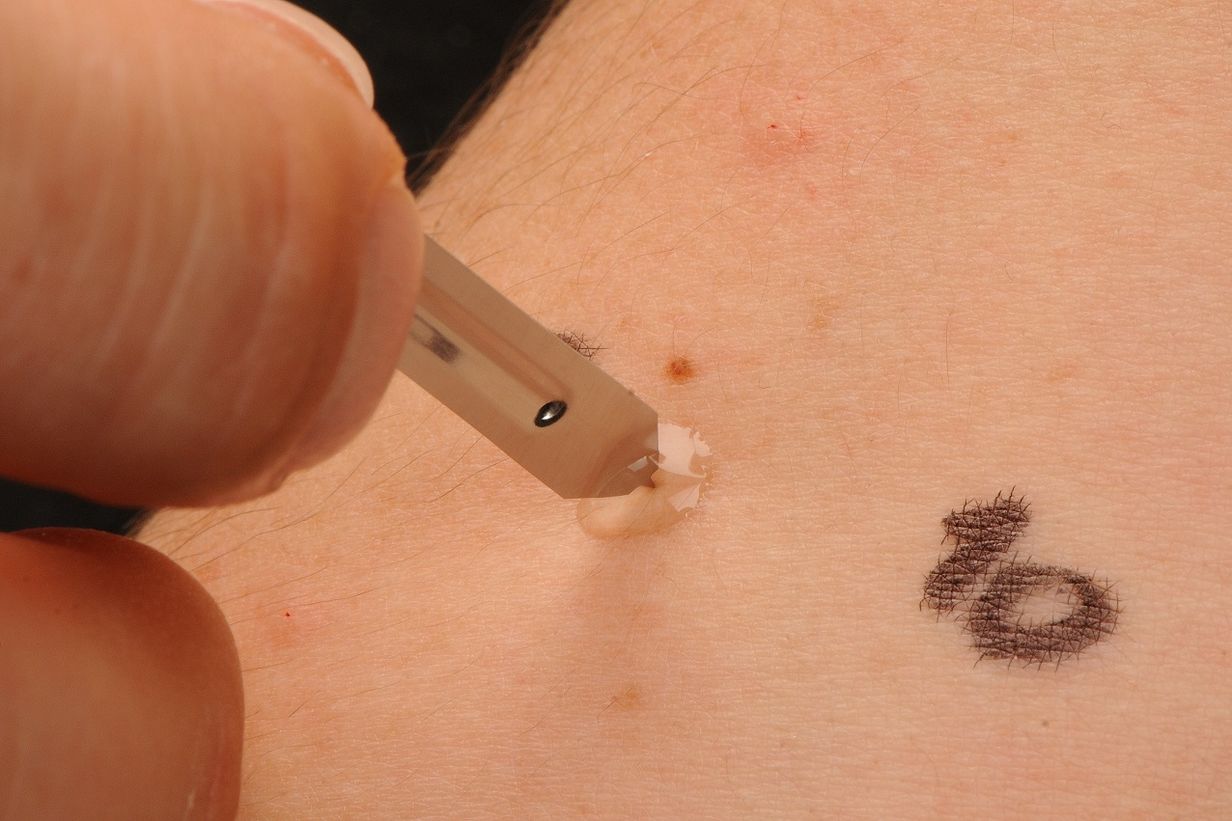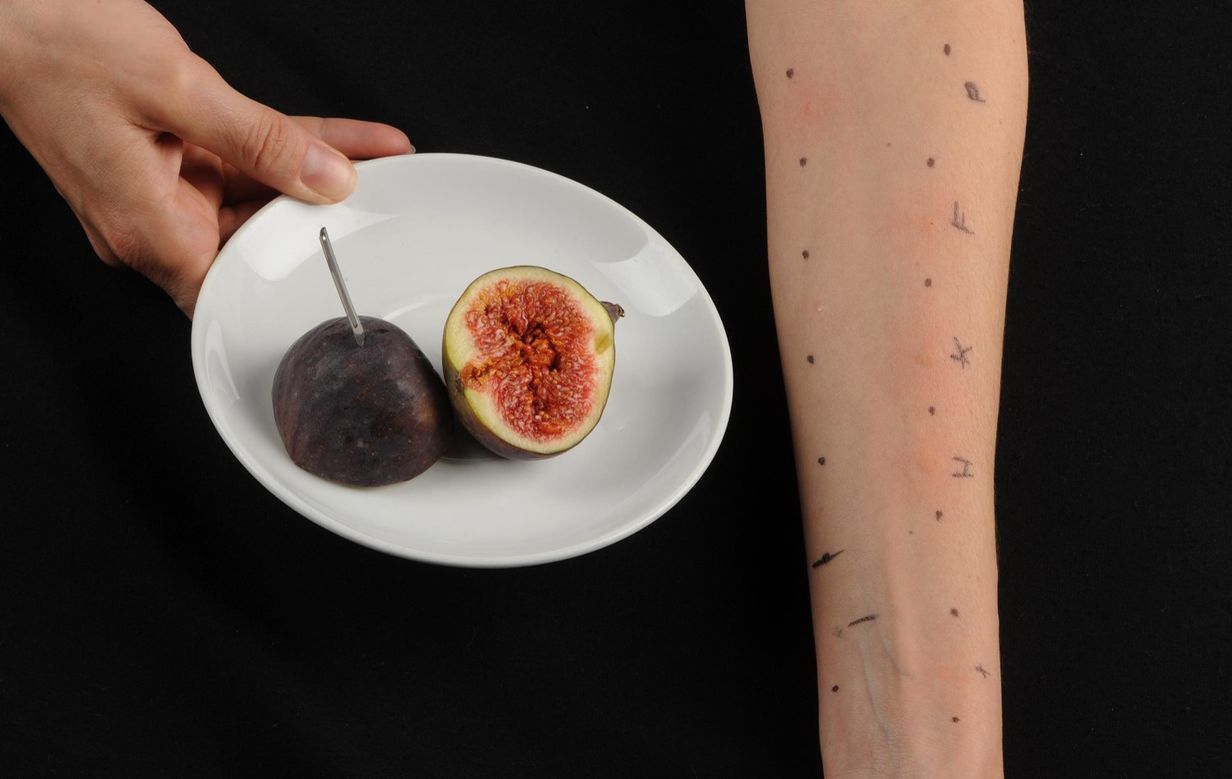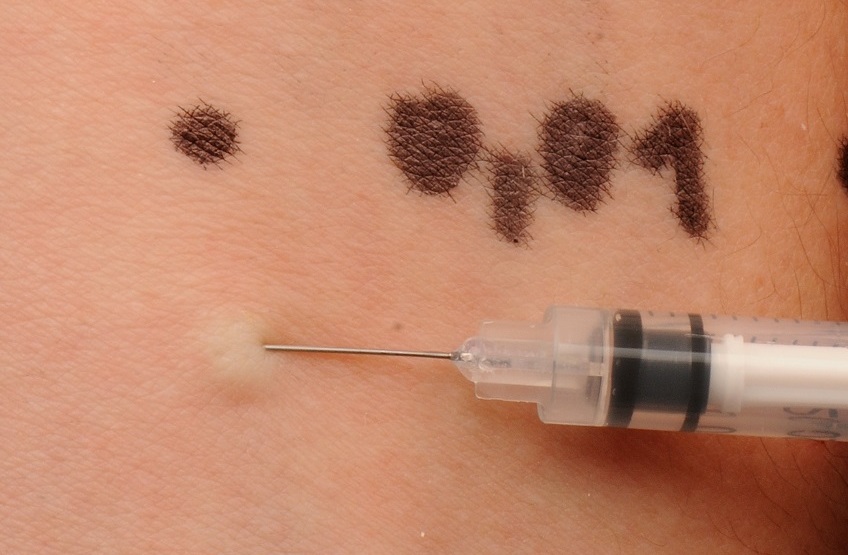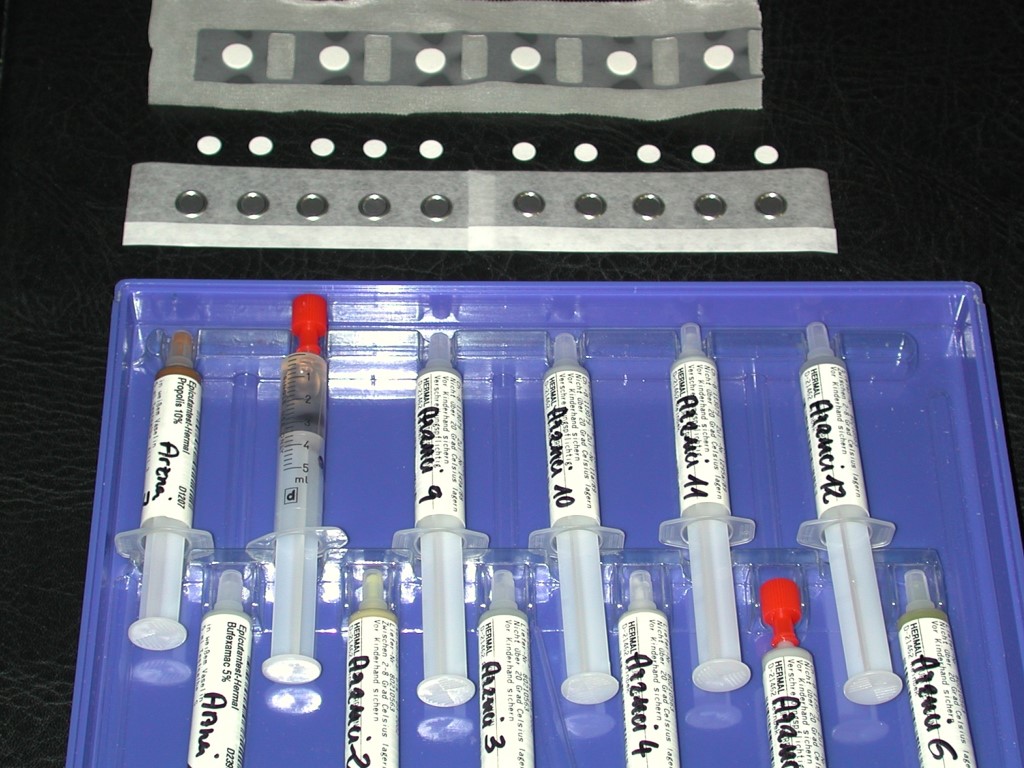
Skin prick test
Here a selection of allergens is dripped onto the skin, and then the uppermost layer of skin is pricked through the drops with a lancet. This process is virtually painless. In a positive test reaction (= allergy) an itchy wheal similar to a mosquito bite will form on the skin.
This test is mainly performed to determine pollen allergies, but is also used for insect, food, or drug allergies.

Prick to prick method
A special form of the prick test. Here the lancet is first stuck directly into the suspected food before being used to prick the skin. This process is virtually painless. In a positive test reaction (= allergy) an itchy wheal similar to a mosquito bite will form on the skin.
This method is mainly used to diagnose a food allergy.

Intradermal test
Small amounts of allergens are injected into the uppermost layer of the skin. The test can be a little painful, so it is only performed if more sensitive testing is required. In a positive test reaction (= allergy) an itchy wheal similar to a mosquito bite develops on the skin.
This method is mainly performed in diagnosing insect and drug allergies.

Patch test
Here a large test patch with a selection of test substances (possible allergy triggers) is applied to the skin – usually on the back. This test patch must remain on the skin for 2 days. After 2 days have passed, the test patch is removed and the skin is examined. The skin must be examined again on the third day. A positive test reaction (= allergy) is manifested in an inflammation of the skin (eczema) at a specific test location.
